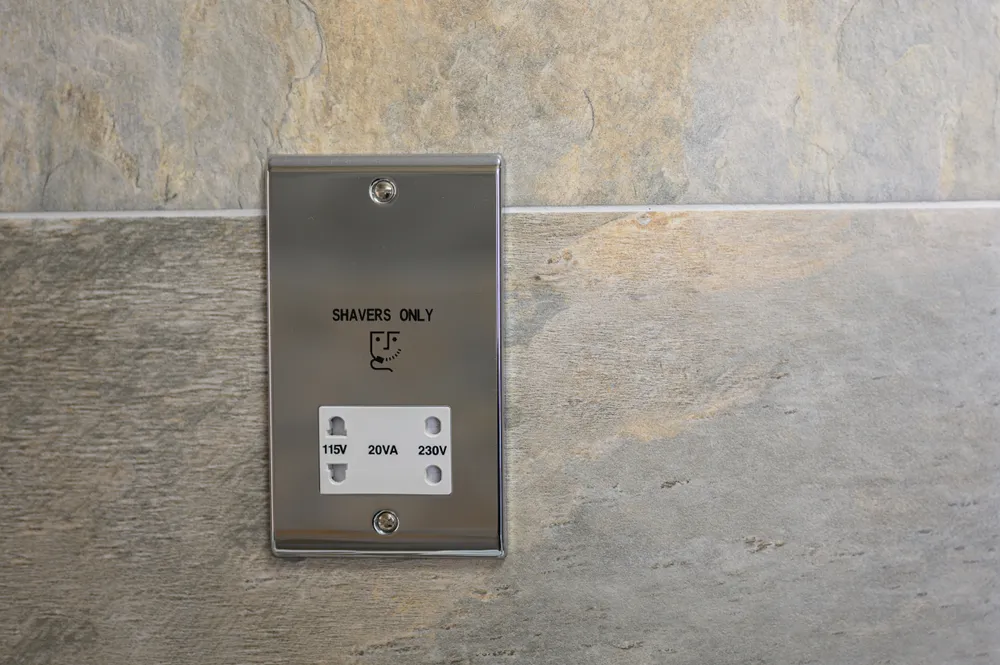
Water is an effective conductor of electricity, which means the combination of the two can be deadly. Consequently, the bathroom can be considered the most hazardous room in terms of electrical safety. The impact of an electric shock is significantly amplified when the skin is wet as the body's resistance is reduced. Unsurprisingly there are stringent requirements for electrical installations in bathrooms. In this blog post, we'll explore how this is done.
Sockets
The installation of sockets in bathrooms or shower rooms (except for shaver-supply units) is prohibited unless they can be placed at least three metres away from the bath or shower.
Electrical shaver points must be safely distanced (in meters) from the bath or shower to avoid water splashes.
Lights
Enclosed ceiling lights are a better option compared to hanging ones.
All non-enclosed light fixtures should be out of reach of anyone using or wet from the bath or shower.
Standard light switches can be dangerous due to humidity and wet hands. A pull-cord switch mounted on the ceiling is the safest alternative.
Heaters and towel rails
The safest method of heating a bathroom is central heating. However, if you have an electric heater, it must be securely installed at a safe distance from the bath or shower.
Electric and gas water heaters in a bathroom should be securely installed and hardwired, unless they draw power from a socket positioned three metres from a bath or shower.
The best way to control electric heaters is through a pull-cord or an external switch outside the bathroom.
Showers
An electric shower must have its own dedicated circuit originating from your fusebox.
Portable electrical appliances
Never bring portable appliances powered by the mains, such as hairdryers, heaters, or radios, into the bathroom. The risk of severe injury is high.

![Logo for [object Object]](/images/logo/text.svg)